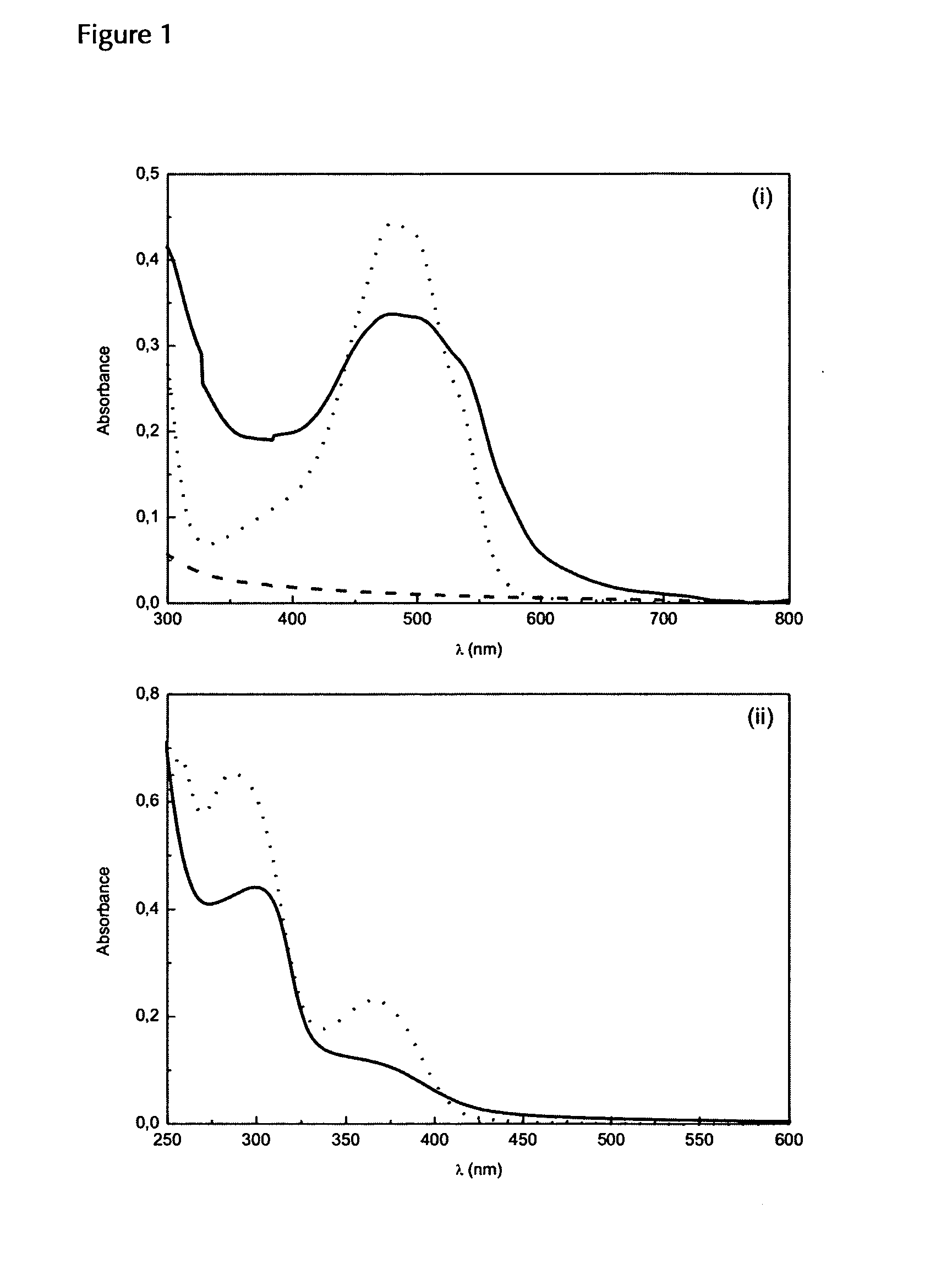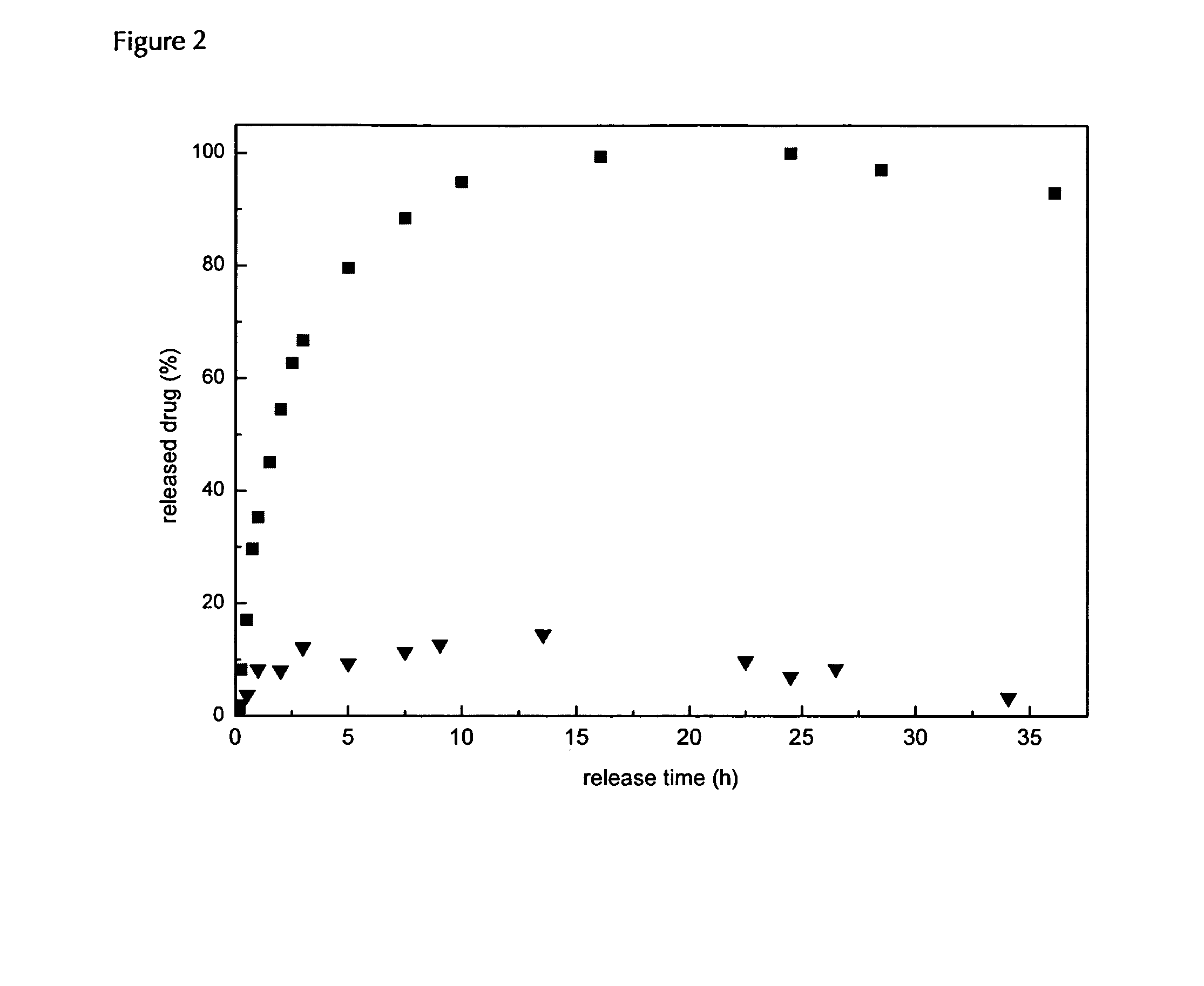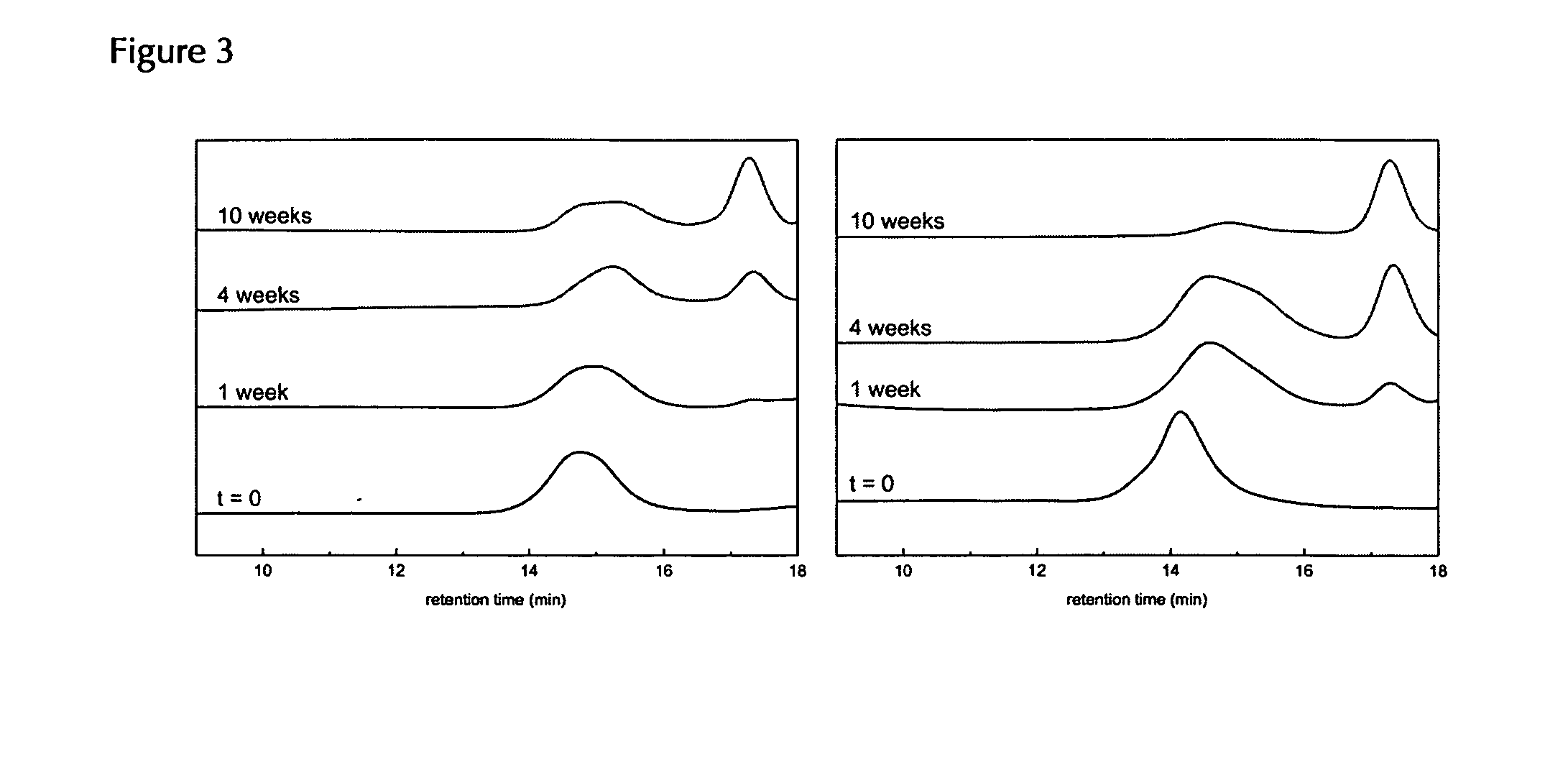Biodegradable, water soluble and ph responsive poly(organo)phosphazenes
a phosphazene, biodegradable technology, applied in biocide, group 5/15 element organic compounds, drug compositions, etc., can solve the problems of high toxicity to healthy tissue, severe side effects of anti-cancer drugs used to control the growth of cancerous cells, and high toxicity of anthracycline antibiotics, etc., to achieve slow release of drugs, reduce efficacy, and delay the effect of therapeutic action
- Summary
- Abstract
- Description
- Claims
- Application Information
AI Technical Summary
Benefits of technology
Problems solved by technology
Method used
Image
Examples
Embodiment Construction
1. General Experimental
1.1. Materials
[0122]All solvents were dried using standard laboratory procedures. All synthetic procedures were carried out either in a glove box (MBRAUN) under argon or under nitrogen using standard schlenk line techniques. Epirubicin hydrochloride was purchased from Molekula Deutschland Ltd. (Taufkirchen, Germany). Amine capped polyetheramine copolymers (PEOPPO-NH2), sold under the trademane Jeffamines, were donated by Huntsman Performance Products and used as received. Unless otherwise stated, the PEO-PPO-NH2 had an Mn of 1000 and an ethylene oxide / propylene oxide ratio of 19 / 3. Where stated that a 2K polyetheramine was used, it had an Mn of 2070 and ethylene oxide / propylene oxide ratio of 10 / 31. PCl5 was purified by sublimation and stored under argon. Triethylamine was dried over molecular sieves and distilled prior to use. All other chemicals were purchased from Sigma Aldrich and used without prior purification. All glassware was dried in an oven overnigh...
PUM
| Property | Measurement | Unit |
|---|---|---|
| Fraction | aaaaa | aaaaa |
| Weight | aaaaa | aaaaa |
| Weight | aaaaa | aaaaa |
Abstract
Description
Claims
Application Information
 Login to View More
Login to View More - R&D
- Intellectual Property
- Life Sciences
- Materials
- Tech Scout
- Unparalleled Data Quality
- Higher Quality Content
- 60% Fewer Hallucinations
Browse by: Latest US Patents, China's latest patents, Technical Efficacy Thesaurus, Application Domain, Technology Topic, Popular Technical Reports.
© 2025 PatSnap. All rights reserved.Legal|Privacy policy|Modern Slavery Act Transparency Statement|Sitemap|About US| Contact US: help@patsnap.com



